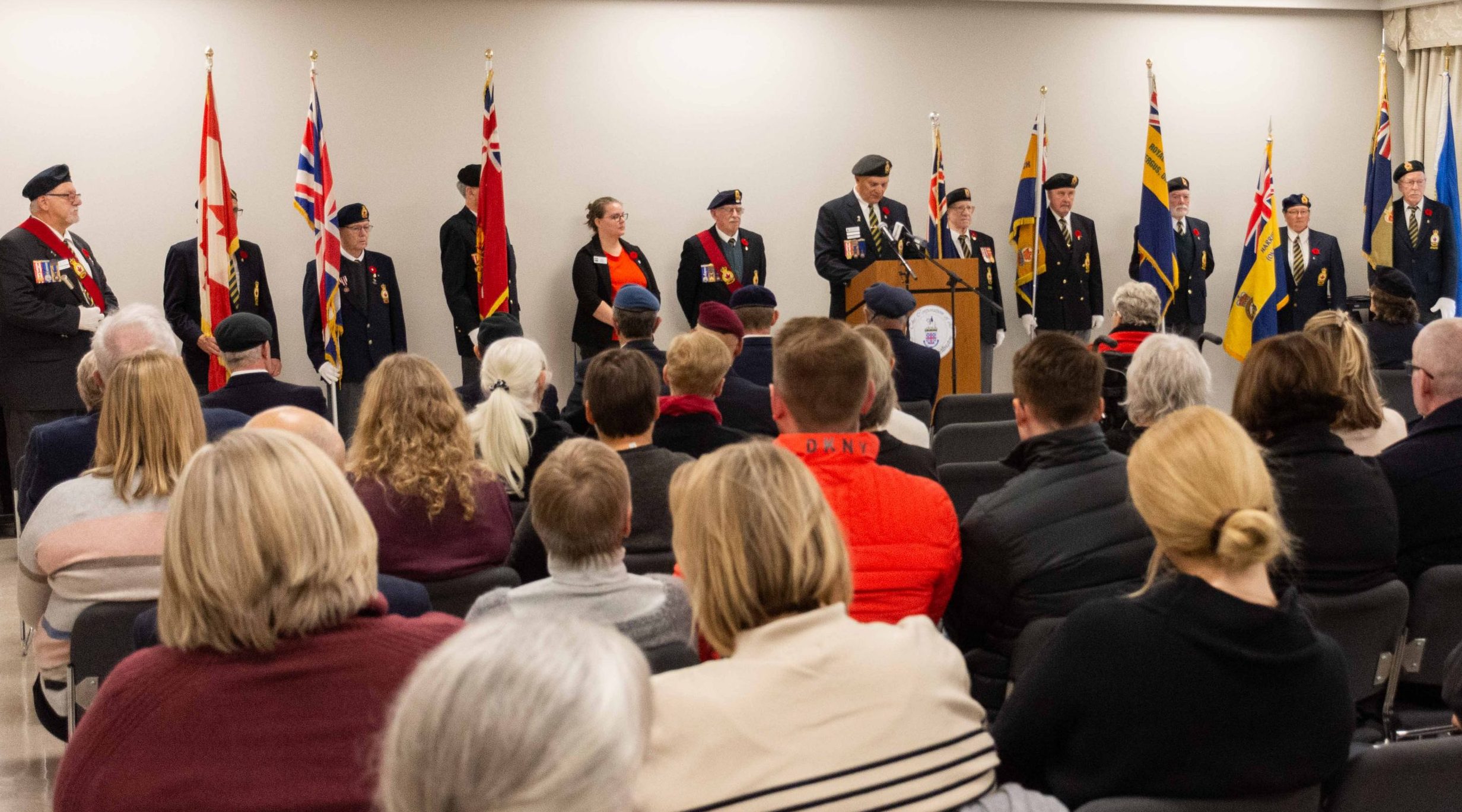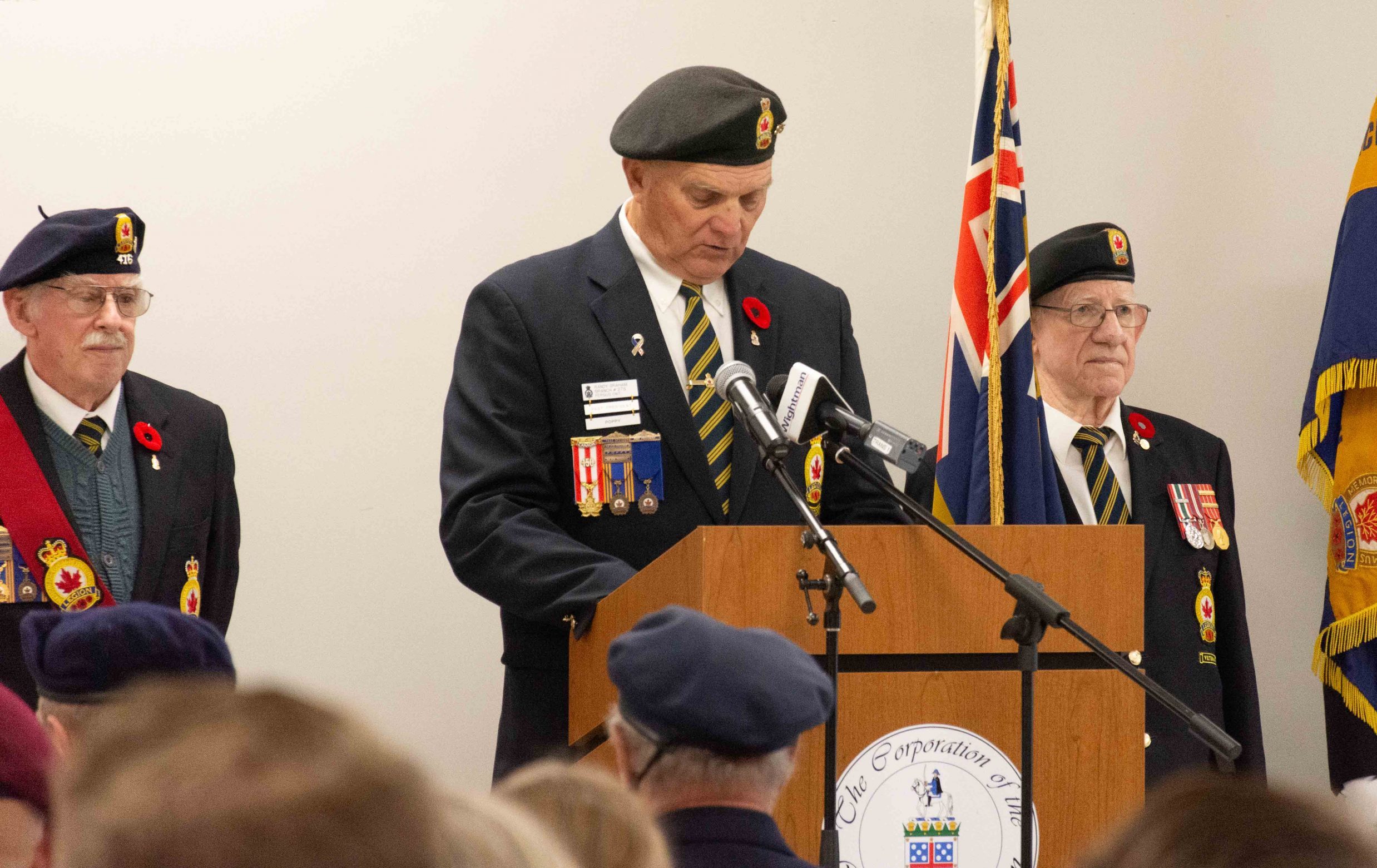ABOYNE – Monday’s weather would pale in comparison to the conditions suffered by the men and women who served in the First and Second World Wars, but it was enough to chase a remembrance ceremony inside of the Wellington County Museum and Archives.
Inside the Aboyne Hall on Nov. 6, Legion men and women stood lined behind a podium wearing blue legion blazers, some weighed down with medals, atop crisp white collared shirts and blue-gold striped neckties.
Outside a whirling wind disordered a light rain about hundreds upon hundreds of names borne by signs staked into the museum’s recently manicured lawn.
Local Legion members, politicians and county staff gathered as they do each year around this time to hear those names, once called alive on their mothers’ tongues but now belonging to dead men who weren’t quite men, but rather still boys when they fell glorious as the bright yellow leaves outside, returning to the earth on which they fought.
After 23 minutes all the names had been read aloud, and a bugle was made to play the Last Post followed by a lament on bagpipes that echoed through the halls.

Local Legion members, politicians and county staff gathered inside the Aboyne Hall at the Wellington County Museum and Archives on Nov. 6 to remember the county’s war dead; the local men and women served in the First and Second World Wars, in the Korean War and in Afghanistan. Photo by Jordan Snobelen
Guelph/Eramosa Mayor Chris White addressed the gathering, speaking of locals such as George Arnold, an Arthur farmer who fought with the 75th Battalion in the First World War, dying of wounds near France in 1916, at the age of just 20.
Or Erin farmer Ashford Earl who enlisted in 1942 land ater died as a truck driver in a crash at just 21.
Or nurse Alice Cook, the sole county woman to die while serving during the First World War, White said.
At 25 years old, Cook succumbed to pneumonia while looking after returning soldiers.
“Each of these individuals gave their lives for a cause they felt was important enough,” White remarked.
“We carry their stories and remember each of them.”
Wellington Place administrator Jana Burns spoke of farmer Arnold Spicer who enlisted during the Second World War and fought with the Highland Light Infantry.
Burns told of the many letters Spicer wrote to his mother at home in Mount Forest.
“He loved his mother, and he loved receiving letters from her,” Burns said.

Doug Kirkwood served with the Lorne Scotts. The medals on the left are from the Legion, and the ones on the right are government medals for his service. Photo by Bill Longshaw
After being injured in France, Spicer took leave in 1943 for a six-week reprieve in England. There he met a British girl who was vacationing with her family in the English countryside.
“They spent some time together, she showed him the historic sights in London, and with her he even engraved his name into St. Paul’s Cathedral,” Burns said.
Spicer talked a lot about his family back home in Wellington’s north, and the girl even wrote to his mother.
Her son was doing well, was very tanned and fit, and a kind, young man, the British girl wanted the mother to know.
On Oct. 4 in 1943, Arnold wrote to let his mother know he was returning to the fight. He was grateful for the chocolate she sent.
“That was his last letter to his mother; seven days later … Arnold was killed in combat in France at the age of 23,” Burns told the gathering.
“To the fallen of Wellington County, we thank you and we salute you,” Burns said.
“We will never forget; we will remember you.”

The Last Post is played following the reading of the names of Wellington County’s war dead during a Nov. 6 remembrance ceremony. Photo by Jordan Snobelen




